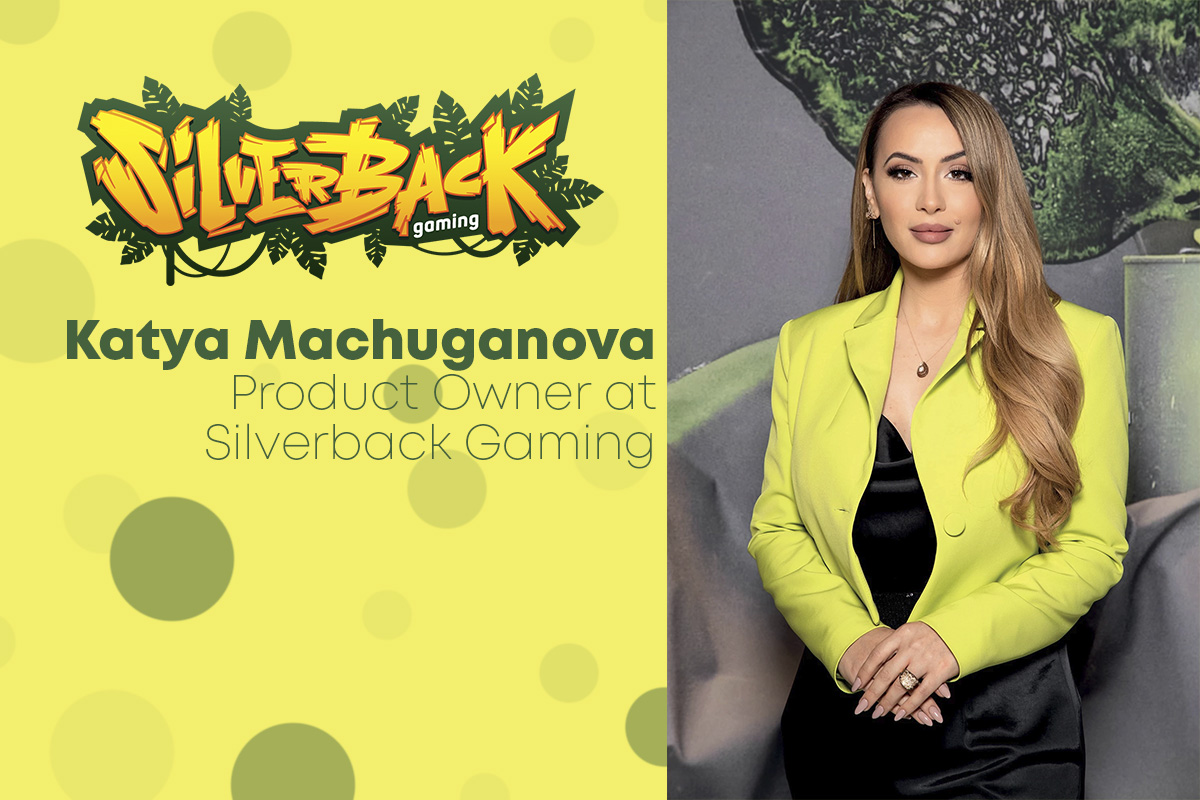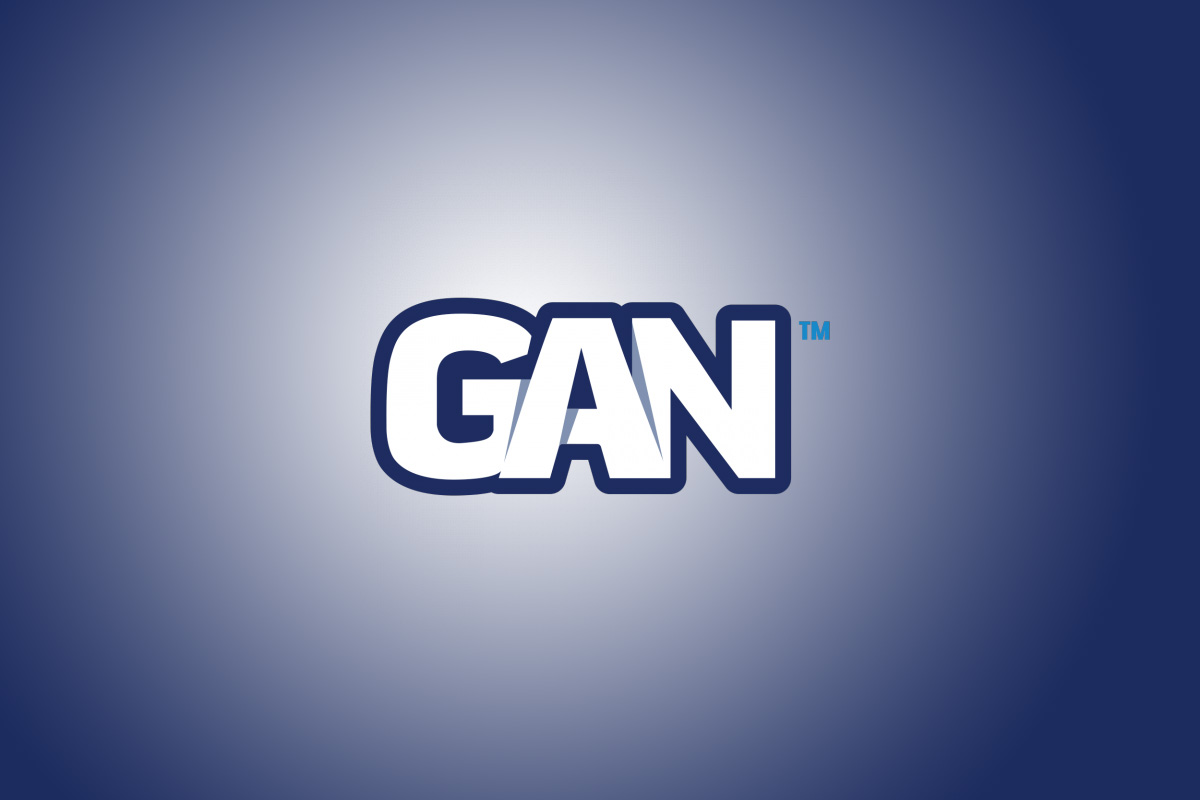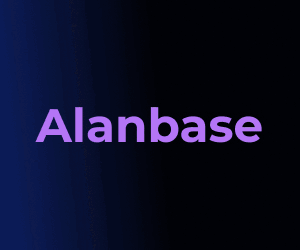Interviews
Q&A – Quality control w/ Yordan Petkov, Product Owner at Silverback Gaming
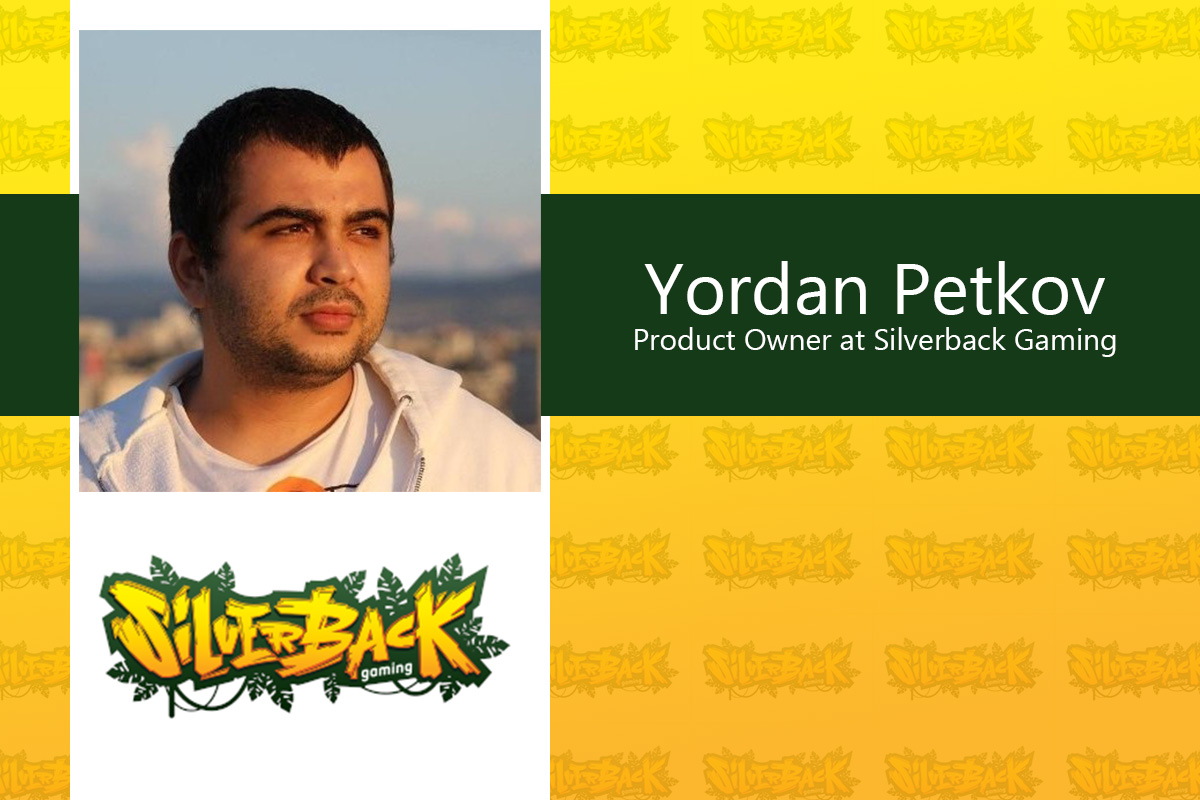
Online slot developers make a lot of noise about the quality of their games and how crucial it is to the player experience they deliver. Given the sheer quantity of slots in the market, quality can be a real differentiator so it’s vital that developers get this right.
But quality assurance is no easy task and requires planning and a seamless process capable of detecting any issues within a game.
Once issues have been detected, the studio must have mechanisms in place to resolve them effectively and efficiently so that development remains on schedule while ensuring the game is actually ready for release.
To learn more about how studios approach quality assurance, we spoke to Yordan Petkov, Product Owner at Silverback Gaming.
How do studios ensure quality across game design, audio, play, etc?
The commitment to quality must cover all areas of game development, from design to build to delivery. The foundation of quality is the early detection of issues and ultimately this requires meticulous planning. By spotting issues early, they can be ironed out in the most efficient and cost-effective way and that’s why at Silverback we focus on anticipating potential problems from the outset. This proactive approach helps to mitigate risks and lays the groundwork for smooth and seamless game development and deployment.
Can you share more insight into how Silverback approaches quality assurance?
We have mapped out a step-by-step approach that encompasses everything from concept and design through to final execution. Each aspect of game creation, including graphics, audio, math, mechanics, game engine as well as front end, is done with careful consideration and planning. By establishing robust processes and incorporating thorough checks, our teams can concentrate on refining and enhancing the game experience instead of firefighting preventable issues and this is what allows us to take the player experience to the next level.
What does the testing phase actually look like at Silverback Gaming?
Our testing is structured and spans multiple stages.
Stage one is the pre-development phase. During this part of the process, the QA teams ensure all required information is provided and they also scrutinise game specifications. This is a super important point in the process as anticipating issues and addressing them at the concept stage is more effective than having them crop up later on.
Stage two is proof of concept. The first build of a game marks the second stage of testing and the QA team rigorously examines critical aspects of the slot, such as engine performance, functionality, stability and of course regulatory compliance. This phase ensures the core components of the game are sound before we move on to the next stage of development and testing.
The final testing stage focuses on the audio and visual elements. Here, we delve into the finer details and make sure the game aligns with best practices and upholds the standards of quality that we have built the Silverback Gaming name on.
How does quality carry over into the delivery of games, which can be an issue for both studios and their operator partners.
In terms of delivering games to operators, this comes down to having a cutting-edge remote game server that can handle integrations into the different platforms that operators are running on. There’s always the chance of encountering issues with integration and that’s why it’s important to have a dedicated team for this. In terms of the quality of the games that then land in the operator’s lobby, the studio must have put the necessary steps and processes in place to ensure these have been identified and address long before integration. Nobody likes to play a buggy game and a studio ultimately lives and dies on the experience its slots provide to players.
Are there any common issues that occur when developing slots?
Yes, but part of quality assurance is ensuring that issues are not recurring. When an issue occurs, it’s important to approach it in a way that addresses it there and then, but also prevents it from occurring again in the future. This is key to making quality assurance as effective and efficient as it can be – if not, you are simply wasting valuable resources on fixing problems that you are already aware of and have addressed in the past.
What sets apart your approach to QA and how do you ensure nothing slips through the net?
Our approach to QA is underpinned by our quality-focused culture which we apply to everything we do. Having top talent in every team ensures that each part of the game has unrivalled expertise working on it. Additionally, we have open communication across all design and development phases, which is pivotal to the overall quality of our slots. Collaborative discussions help iron out potential pitfalls and provide valuable insights that contribute to the highest quality end product.
What are the upsides to investing in quality assurance and making it a top priority?
QA teams not only identify bugs but also contribute to the overall quality of the game. Their valuable suggestions and insights lead to continued improvement. While having the right processes in place for testing is important, experience often reveals unforeseen issues and that’s why having a talented and experienced QA team is crucial. Our influence spans all stages of game production, minimising the risk of potential problems and ensuring that when issues do arise, they are quickly resolved.
QA-driven quality results in polished, engaging games that players love. In turn, operators appreciate the reliability and appeal of the games, allowing the studio to build a long and successful relationship with the casino. At Silverback, our product owners are fully committed to fostering collaboration and translating vision into reality while upholding a customer-centric approach. This shapes games that resonate deeply with players and operators alike.
By building a culture of quality, anticipating potential pitfalls and executing a well-structured testing process, we ensure that our games deliver exceptional player experiences. Quality is not just about finding defects; it’s about delivering excellence and making lasting connections with players and operators.
Interviews
Counting Down: A Roundtable Preview of Brazil’s iGaming Era
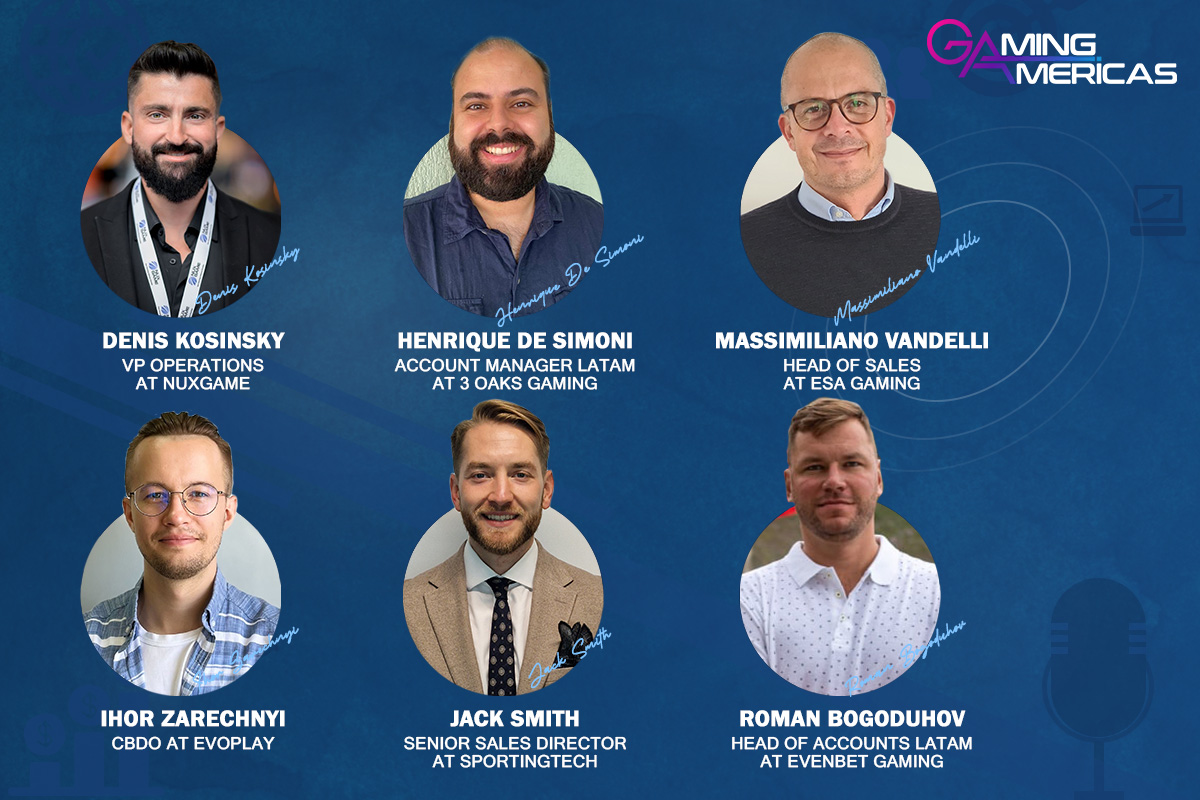
As Brazil finally gives the green light for sports betting and iGaming, industry leaders are gearing up for a transformative chapter in 2024. In this insightful roundtable discussion, we had the privilege of engaging with key figures, namely Henrique De Simoni (Account Manager LatAm at 3 Oaks Gaming), Massimiliano Vandelli (Head of Sales at ESA Gaming), Denis Kosinsky (VP Operations at NuxGame), Ihor Zarechnyi (CBDO at Evoplay), Jack Smith (Senior Sales Director at Sportingtech), and Roman Bogoduhov (Head of Accounts LatAm at EvenBet Gaming) to delve into the exciting prospects of casino entry into the newly regulated market. Our focus centred on the meticulous preparations undertaken by suppliers, understanding local player preferences, and exploring the collective vision for the future of this burgeoning market.
As the journey to secure the final approval for iGaming regulation in Brazil concludes, what strategies and preparations has your company put in place for the upcoming market launch?
Henrique De Simoni
Despite Brazil’s iGaming market being in its incipient stages, it has transitioned from a rising star to a tangible reality. This regulatory milestone in the largest Latin American country signifies a plethora of opportunities for the entire iGaming ecosystem, spanning from operators to providers.
As a company known for its agility and meticulous attention to detail, we’ve been actively engaging with key events in the region such as SBC Brazil, and SiGMA Americas. By fortifying our network and relationships with major operators, platforms, and aggregators, we’re positioning ourselves strategically for the impending market launch.
Massimiliano Vandelli
The impending regulation of iGaming alongside sports betting in Brazil presents a pivotal opportunity for our company. We’ve meticulously prepared for this milestone by adopting several strategic initiatives. Firstly, we recognise the significance of a diverse portfolio, particularly given the potential exclusion of certain online casino games. Therefore, we’ve focused on ensuring a balanced offering to cater to varying preferences and regulatory requirements.
Localization lies at the core of our approach. Brazil’s vast and distinct market demands tailored solutions, encompassing language support, minimum bets, and game types that resonate with local preferences. Additionally, understanding the nuances of player behaviour, such as volatility preferences, is crucial for delivering a compelling gaming experience.
Furthermore, leveraging our existing partnerships with established operators positions us strategically in capturing a substantial market share. We have a track record of success with these operators, and collaborating closely with them not only strengthens our market presence but also facilitates smoother market entry.
Ihor Zarechnyi
Evoplay’s business strategy after the final approval of iGaming regulation in Brazil will involve forging key partnerships to strengthen our position in the Latin American market.
With Brazil’s population surpassing 215 million and the local audience’s passion for entertainment, our diverse game portfolio is calibrated to cater to their preferences. Our overarching goal is to replicate and surpass the success we’ve already achieved in Latin America. We focus on enhancing the gaming experience of Brazilian players by addressing their entertainment requirements.
Denis Kosinsky
As for all new market entries, our strategy for Brazil consists of compliance, localization, partnerships and innovation. Much like Europe, Brazil is a highly fragmented market and each state should be approached on a case-by-case basis. We are customizing our platform for Brazilian players by adapting to the culture in terms of language, local payment methods and games that resonate locally while our multi-brand feature can be used by casino operators to manage different geos. We’ve also turned our attention to forming partnerships with Brazil-based companies, enabling us to both broaden our reach and enhance our offering.
With smartphones dominating as the preferred device for iGaming, we’re optimising our tech’s mobile compatibility for a superior experience. In addition, our marketing efforts are tailored to engage Brazilian audiences through localized content and community events. As Brazil finalizes its iGaming regulations, NuxGame is ready to deliver a comprehensive and culturally attuned gaming experience.
Jack Smith
We have recently seen that the Brazilian government has now officially recognised GLI as a certified testing lab. As part of this we have made continued efforts to conform to GLI 19 and GLI 33 which are synonymous with other markets on a global level. In addition to that we have also been working closely with Serpro on data transfer requirements.
In terms of strategy, our stance remains the same as always. We are focused on collaborating with our operators to ensure that we give them all of the technical tools and capabilities to harness their own local expertise and continue to be successful. This is crucial in what will likely be a very competitive market.
Roman Bogoduhov
The country is still at the early stages of regulation, so setting rules and transforming them into business practices will take several long and hectic months. Traditionally, online poker is not the first vertical to be regulated, and this is the case for Brazil as well: our turn will come after sports betting and online casino games. What we are doing now is a lot of homework and preparation: connecting with the market stakeholders, getting to know the player preferences, specific market challenges, and software demands.
Product localisation and customisation are at the core of the EvenBet Gaming platform, and our offering has to be ready for the market launch. So, our business development team explores the market and identifies the features and solutions needed by the Brazilian operators and players, so that we can adapt our product to their needs.
Also, it’s crucial to mention that the Brazilian iGaming community is quite closed and somewhat wary towards foreign vendors and providers, preferring to establish partnerships with companies that demonstrate a proven success record in the local market. While regulation moves forward, we can take it slowly, creating fruitful relationships, showcasing examples of our partnership with operators in South America and educating the market on the business strategies allowing us to earn on poker.
In anticipation of the iGaming launch, which specific verticals do you believe will capture the hearts of local players, and have you identified any unique preferences or trends that are shaping your approach?
Denis Kosinsky
As part of our continuous improvement strategy, NuxGame conducts regular market research and player feedback analysis to tailor our offering and stay ahead of the tech curve. With our aims of delivering a diverse, engaging, and secure gaming environment that aligns with local player preferences, we have identified key verticals that are poised to captivate local players.
Mobile gaming is one of the largest growing trends worldwide and Brazil is no different. NuxGame’s platform has optimized games to present a seamless mobile experience, catering to this increasing demand. Looking at specific genres, live dealer games perform particularly well in Brazil. For these titles to flourish moving forward, it is important to ensure that there is a Portuguese-language option in addition to high-quality live streaming and a diverse array of experiences to engage as many players as possible. Brazil is also a large adopter of cryptocurrency and blockchain technology. NuxGame’s Web3 technology and cryptocurrency purchasing feature position us to leverage these technologies for secure and efficient gaming experiences.
Ihor Zarechnyi
Initial findings from Brazil reveal a strong preference among the local audience for online casinos and sports betting. Based on third-party market research, it appears that Crash games capture the attention of 79.61% of Brazilian players. Following closely behind are slots, with a significant 39.83% engagement. Leveraging these data and our experience in the LatAm market, we’re confident that Evoplay’s diverse game portfolio, particularly our sport-themed titles, will deeply resonate with this audience.
However, despite our solid foundation, we remain committed to further understanding the local business culture and refining player communication approaches for strategic success. We’re actively developing exclusive projects like Slotopia and Bingo to enrich our offerings and cater to diverse player demographics.
Roman Bogoduhov
Undoubtedly, sports betting will stay the top online vertical in Brazil. As the market expands, new technologies and advanced solutions are coming to the country, online sports betting has a chance to become more prominent than offline, thanks to live bets, mobile access, and fast and secure payments which become available as the regulation settles.
Traditionally, the lottery is the second most popular gaming activity. Still, the state has a monopoly here, so the operators and vendors will demand lottery-like games: bingo, scratch games, keno, etc. Live casino games, card games (including poker and blackjack), and new trends like crash games will follow the leaders.
Jack Smith
As we know in most established markets there is a traditional split between sports betting and casino with Brazil unlikely to differ. Brazilians have a huge affinity with Soccer and that is not going to change anytime soon with more operators vying for sponsorship opportunities with its biggest clubs.
The inclusion of iGaming into the bill was hugely important as well as this represents a sizeable piece of the market. The likelihood is that we will likely see this continue to grow through traditional live dealers and crash games which have proven to be popular in the region as well.
At Sportingtech we recognize iGaming’s importance, hence why we are continuing to partner with local games providers to supply fresh new casino content that we feel will identify with the consumer. It remains to be seen how the landscape will change in the future but as always, our teams will continue to research the market and look for new innovative products to satisfy Brazilian players.
Massimiliano Vandelli
We foresee a diverse landscape of gaming verticals that will resonate with Brazilian players, driven by both traditional and innovative content. One area of particular promise lies in non-traditional games, such as crash games, which have demonstrated considerable appeal across Latin American markets. Our EasySwipe™ portfolio, in particular, stands out as a compelling offering for sportsbooks seeking to diversify into casino games. For instance, games like Goal Mine World, which allows players to personalize their gaming experience by selecting colours associated with the Seleção Canarinha (Brazilian national team), are tailored to resonate with local tastes.
Our widget integration within sportsbooks has already yielded remarkable results, fostering player loyalty and facilitating seamless cross-selling between sports and casino content. This underscores the importance of delivering fast and engaging casino experiences that complement sports betting activities.
While sports are expected to drive significant engagement, the initial interest from online operators targeting the Brazilian market indicates a growing demand for high-quality casino content as well. In response, our latest line of video slots, featuring titles like 12 Deadly Spins and Candy Drops, is poised to captivate avid casino enthusiasts seeking immersive gaming experiences.
Henrique De Simoni
Absolutely! With our company’s wealth of experience in the iGaming industry, I’ve been entrusted with spearheading our efforts in LatAm, particularly in Brazil. Understanding the local culture, speaking the language, and possessing a background in the B2C sector allows us to infuse our offering with user-centric experiences for enhanced player engagement.
I firmly believe that cross-selling will be the primary vertical to target. Seamlessly transitioning players from the sportsbook to casino presents a golden opportunity, especially in a country where sports hold significant cultural sway. While crash games have made initial waves, we anticipate slots to take centre stage in the long run. Our successful slot title, Coin Volcano, with its captivating theme, user-friendly gameplay, and vibrant graphics, exemplifies the high-quality gaming experiences we’re aiming to deliver in the market.
What are your overarching expectations for its trajectory? Are there specific milestones, challenges, or growth indicators that you foresee shaping the landscape in the coming years?
Massimiliano Vandelli
Looking ahead, we anticipate various challenges and growth indicators that will shape the trajectory of our operations in Brazil. Regulatory developments, including the implementation of iGaming legislation and associated licensing frameworks, will significantly influence market dynamics and operator engagement. Furthermore, evolving player preferences and market trends, such as the integration of sports and casino content, will present both opportunities and challenges for our growth strategy.
Primarily our aim is to secure significant exposure for our games with leading operators in the market. To achieve this, we are committed to fostering and strengthening our relationships with major partners in Latin America, who are poised to play a pivotal role in the market. We’re exploring opportunities for exclusive partnerships, developing sports-driven content, and creating bespoke games tailored to the requirements of major operators. By prioritizing localization, we aim to enhance player engagement and drive adoption of our offerings across the Brazilian iGaming landscape.
Jack Smith
Given the strong interest by what feels like the majority of the iGaming industry, it’s fair to say that everyone sees the growth potential in Brazil over the coming years. Research suggests that revenues will reach $2bn in 2024 and a projected market volume of $4bn by 2029. If those projections were to be correct, Brazil would solidify itself as one of the largest markets globally.
There aren’t specific milestones we are working towards but the continued increase of internet penetration in Brazil will play a crucial role in the development of the online gambling market. Smartphones are becoming more cost effective and available to everyone, and with the incoming legislation we will see the introduction of native apps to the iOS and Google Play stores. This will add an additional layer of convenience to the consumer.
There is also the retail opportunity, which has been hidden in plain sight for a number of years, so it will be interesting to see whether operators transition into retail to penetrate players who are limited to cash only transactions.
Ihor Zarechnyi
With the market’s upcoming launch, we anticipate a notable surge in activity. However, like any new endeavour, this journey may be accompanied by challenges and will require thoughtful, well-balanced actions from regulatory authorities and market participants.
We maintain a positive outlook based on predictions that Brazil’s online sports betting, casino, and bingo market could soar to nearly $3 billion in revenue by 2027, positioning it among the world’s leading markets.
As we navigate rapid growth, it’s important to acknowledge the potential risks, including market overheating. However, armed with a robust strategy and a line-up of games that culturally connect with Brazilian players, we’re well positioned for success in further solidifying our standing in the LatAm market.
Henrique De Simoni
The average Brazilian spends over nine hours on the internet per day, signalling a profound digital presence ready for exploration. As such, we’re poised to leverage this extensive online engagement by ensuring our high-quality games, coupled with robust gamification elements, provide unparalleled slot experiences.
In anticipation of numerous new entrants and potential mergers and acquisitions in the market, we’re gearing up for increased competition. With over 134 companies vying for licences in Brazil, each capable of operating three platforms, the landscape is primed for expansion, with an estimated 402 regulated betting sites anticipated. Despite the challenges ahead, we’re optimistic that our expertise and ability to resonate with the Brazilian audience will set us apart. The best is indeed yet to come!
Roman Bogoduhov
Now the Brazilian iGaming market is shaping, and once the project is launched and adapted to the local preferences, it’s relatively simple to compete and acquire players. The operators will win with attractive bonuses and promotions, well-thought campaigns, and in particular social media marketing and influencer-based advertising. Brazil is one of the biggest influencer markets in the world, according to the statistics, up to 45% of consumers here trust social media platforms and recommendations. At this stage, I will not be surprised if Instagram and TikTok are literally invaded by sports betting and casino placements.
During this initial bountiful period, operators must keep in mind long-term goals. Given the difficult history of long and painful payouts and the lack of local or at least Portuguese-speaking customer support, these two operational aspects are irreplaceable for building trust and long-term engagement and are currently in the top three reasons for player churn.
Denis Kosinsky
With regulation finally being implemented, we can expect Brazil to become a favorable market for growth and sustainability. Early insights signal toward rapid expansion fuelled by the recent legislation, while its young, tech-savvy population’s strong interest in digital entertainment means it is poised to become one of the biggest markets worldwide. Pivotal to success in the market will be player acquisition and retention strategies that provide a superior user experience. Initiatives such as loyalty systems, player battles and brand customization will be critical in retaining players and staying competitive.
We’re closely monitoring growth indicators such as user engagement metrics, market share expansion, and the adoption of new gaming technologies to adapt our strategies for sustained growth. Furthermore, responsible gaming, at its core, is the most important contributor to making the gambling industry sustainable in the long-term. To play our part in this, NuxGame will be focusing on ethical practices to foster a safe and sustainable gaming environment.
Stemming from complex regulatory frameworks, compliance requirements and heightened competition, encountering challenges in a new market is unavoidable. Through our dedication to innovation, customer satisfaction, and strategic partnerships we can address these obstacles before they arise and ensure a smooth launch into the regulated Brazilian market.
Interviews
Social media: the new frontier for betting engagement?

Since the dawn of the internet, social media platforms have been a great way for people to stay in touch. And as mobile technologies have continued to advance, we’re now more connected than ever. In fact, you’d be hard pressed to find someone who doesn’t have a social media presence nowadays.
From Facebook and Instagram to LinkedIn and even TikTok, social media apps have become a staple of our daily lives. So, it’s no surprise that gambling brands are looking towards such platforms as a means of tapping into new audiences.
We spoke to Allan Petrilli, Managing Director of Acquire.Bet, and Troy Paul, CEO and Co-Founder of SGG Media, to ask whether social media is going to become the next battleground for audience engagement.
BetMGM recently made the news after partnering with the social media platform X, formerly known as Twitter, in a deal which has made the operator the first online sportsbook embedded within a major social media platform. In your view, what could this agreement mean for the industry?
Troy Paul: It is a very smart play for BetMGM. If operators want to reach the new generation of gamblers, aged 21 to 40, they MUST establish a solid presence on social media.
Ultimately, social media is where this generation gets their news, sports updates, scores and share content with their groups of friends. Ignoring the power of social media would be a big mistake.
Could partnerships with social media platforms be the way forward for gambling operators to reach new demographics of players? If so, what impact could such agreements have on player engagement, and subsequently, player acquisition costs?
Allan Petrilli: Deals such as the one signed between BetMGM and X, or DraftKings and Apple Sports, are examples of sports betting brands getting more creative in how they plan to boost brand awareness and consumer trust. They are deviating away from the more traditional advertising models such as TV and other forms of above the line media.
Focusing specifically on the BetMGM agreement, X is a vibrant, passionate community that is heavily engrained in sports. It really seems like a great fit for what BetMGM is trying to do from a brand perspective.
X is also a hotpot of bettors, and this will ensure they are more heavily engaged with the brand. When it comes to lower customer acquisition costs (CAC), that is yet to be determined, as they haven’t released specifics of the deal. As it always goes, it depends on what they paid…
Troy Paul: Absolutely! Partnerships between social media platforms and gambling operators will be key for those who want to communicate with the more digital conscious bettors. If you then compare this to advertising verticals such as television and radio, social media advertising is also much more cost-effective.
Affiliates can be an effective way to engage with bettors across social media platforms. How can gambling companies better use affiliates to build a social media following?
Allan Petrilli: Micro-influencers are becoming more popular than ever as a significant driver of affiliate traffic, and this is due to their strong follower engagement and brand loyalty.
Many affiliate companies have SIGNIFICANT social presence and have already established their own communities. These types of partnerships can effectively give brands access to a whole new demographic of customers in a more organic fashion.
Operators needs to continue to offer their social partners a more organic way to drive traffic, with shareable bet slips, better deep-linking and more thoughtful partnerships. As these partnerships become more commonplace, operators, affiliates and social media partners will need to collaborate much more closely to find the most effective strategies to build new communities.
As more operators turn their attention towards social media as a marketing tool, how can they best stand out from the crowd? Could we soon see more brands getting creative with their campaigns?
Troy Paul: Social media should be used to create a COMMUNITY of sports fans, and sports gamblers. You cannot create a community by sending only ads. You must create fun, readable, informative CONTENT and occasionally drop in an ad or sign-up link. Content is King in this regard.
As the sports gambling world continues to mature, the smarter, savvier operators will continue to use social media as a means of retaining their customers and creating a social media-led community of loyal customers that not only enjoy their content but also continue to bet via their brand.
Allan Petrilli: Standing out from the crowd isn’t going to be an easy task. You really need to establish your brand identity. The real question is: who is going to be the Paddy Power of the US market, right?
In the US, I think that so far, we have seen quite a buttoned-up approach to social media. I do expect that to change, but I think that change will be quite slow at first. This is where micro-influencers could play a major role, they could really offer a big win potential for sportsbooks and casinos.
Just from what I have seen, I think that many brands can take a much more localised approach on social media. The power for targeting is there, the time is not to have creative, offers, etc that match the local bettor to better engaged, convert and retain them.
With that in mind, what role can multimedia assets, such as video and audio, play in driving brand recognition?
Allan Petrilli: Creative content, along with more engaging offers, are the lifeline of any campaign or branding exercise. Brands need a strong mix of branded video, user-generated content, live and pre-game content, and cross-platform retargeting strategies to get the most out of what they do. It’s all about striking that balance and delivering content that the end-customer finds interesting.
Troy Paul: Video-led content is super important if you want to drive brand recognition. The savvier operators will use platforms such as Instagram, YouTube, Twitch, TikTok and other video platforms to create those communities and establish a solid following. Millennials and Gen-Z have been shown to enjoy this quicker, more engaging form of content so it’s worth tapping into the world of video content.
When it comes to promoting odds and betting statistics on social media, how can the industry as a whole ensure that player protection remains at the forefront of any social media activity?
Allan Petrilli: The first thing that sportsbooks and casinos need to do is look at how they are targeting their customers and how they are informing their bettors about exclusion lists. The power is there, it just needs to be used properly.
More educational content is also a very important factor when looking to ensure that responsible gambling remains at the forefront of your social strategy. Throwing around $5000 sign up bonuses without ensuring players understand what they are getting into is a potential issue. That doesn’t always need to be in the ad, but brand should at least be introducing better landing pages and terms for players to be aware.
Interviews
Mexico in 2024: Committed to the cause
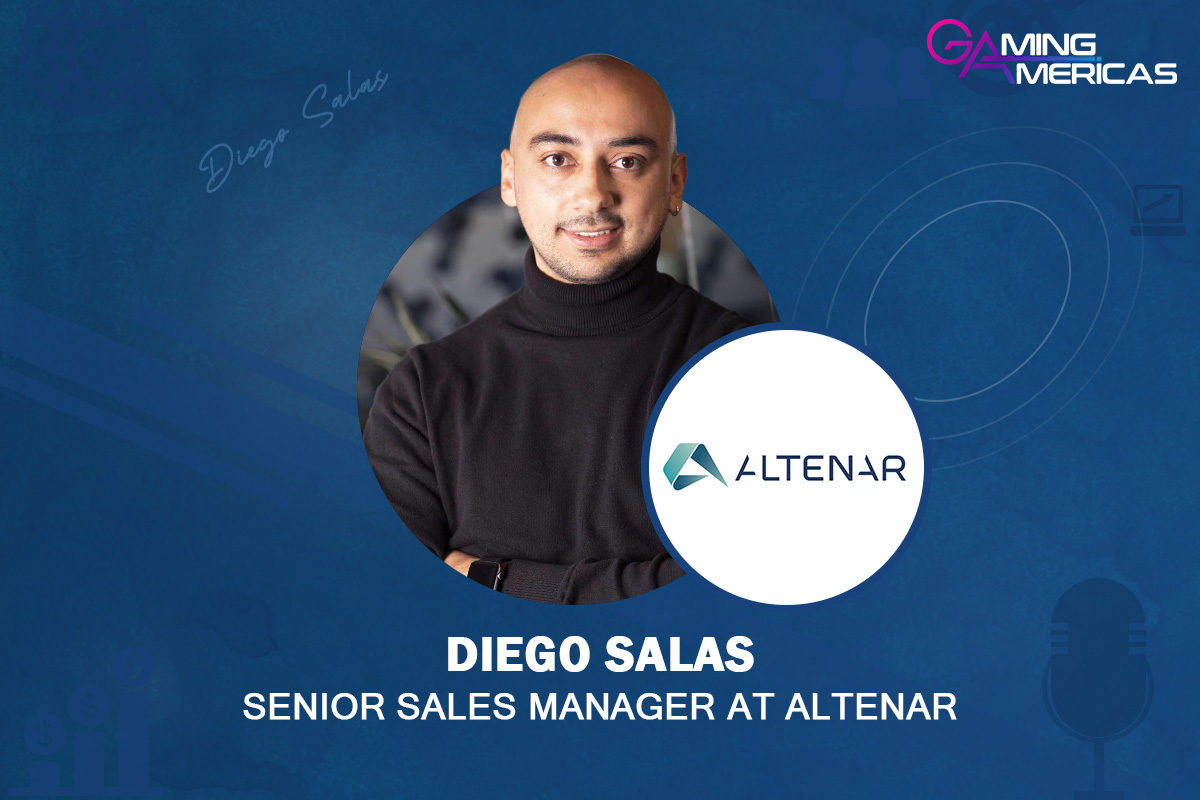
Mexican bettors demand localization on a different scale. An American approach to sports betting means they differ from other LatAm markets that have moved to decimal or fractional odds. As the population increasingly embraces a mobile-first approach, Altenar’s Sales Manager, Diego Salas, explores why the provider is best placed to meet the unique needs of Mexican operators in the flourishing market.
What is your view of the market at the moment and what makes it so promising?
Over the past three years, Mexican operators have experienced a significant migration from predominantly land-based, brick and mortar operations to an online-focused business model. As a result, more than 70% of sports betting revenue now comes from online customers, with internet and smartphone adoption becoming more widespread across LatAm’s second largest population. The increase in mobile penetration follows the emergence of a younger, more tech-savvy demographic with a median age of 30. They are engaging in sports betting in a more social way.
In keeping with this shift online, we entered 2024 with the release of our white-label mobile app which can be customized and places the sportsbook at its core. Approved across Apple Store and Google Play, it offers accelerated time to market, robust security and options for features such as Early Payout, Bet Builder and Player Specials. The mobile and online channels appeal to a new generation of bettors that require accessible, easy to follow sportsbook products at their fingertips. The app promises an ever-increasing number of sports and competitions with a network of official data partners delivering both quality and speed of data.
How does Mexico differ from its neighbouring markets?
Mexico is a distinct market compared to other Latin American countries and stands out due to its diverse sports culture. It is well known that soccer is the most popular sport in LatAm and at least 90% of bets still come from matches. However, in Mexico, bettors’ tastes are more diverse. Football sits among basketball, baseball, and the NFL as highly popular sports.
Unlike some of its neighbours, Mexico uses an American approach to odds, instead of the European decimal and fractional odds format. Altenar anticipated this difference by offering a flexible, localized platform to cater to specific preferences of Mexican players. Its user interface for Mexican players offers an American odds format to demonstrate provide intuitive navigation.
What will 2024 look like for Altenar in Mexico?
There can be no doubt that LatAm is a major topic of discussion in the industry. The gates are set to swing open to Brazil later in the year and Mexico itself is awaiting some regulatory updates following the legalization of online betting in 2014. As a result, Altenar acknowledges the need for boots on the ground in the continent.
We have just opened a Uruguay office to ensure we can best serve our operator partners across LatAm. We know it is important to them to access people working in the same time zone, who are integrated in their communities. The office will oversee operational aspects and instil confidence in our partners that they will have a team that is more easily accessible than other competitors.
In March and April, we will be at the IV International Gaming Convention in Mexico (12 – 14 March), SAGSE Latam in Argentina (20 – 21 March) and GAT Expo in Colombia (9 – 11 April). Our priorities at these events will be fostering our partnerships in the market and ensuring we are attuned to the regulatory developments across each country. Brazil and Chile are in the process of developing regulations and we are watching those closely, adapting accordingly. We will also be showcasing our flexible platform and features at these events, including our turnkey solution, SSBT and new tools such as Betting Insights, Bet Mentor and Bet Boost. Events are an invaluable way for us to refine our strategies moving forward and we look forward to meeting people over the next month.
-

 Latest News5 days ago
Latest News5 days agoXpoint Launches Groundbreaking New Capability to Reduce Geolocation Costs for Operators
-

 Latest News6 days ago
Latest News6 days agoFBMDS, Planet Invest and EverPlay Score a Fantastic Goal in a Revolutionary Partnership Involving Ronaldinho Gaucho
-

 Cryptocurrency2 days ago
Cryptocurrency2 days agoBitLine Enhances Onboarding Experience in Collaboration with Jumio: Simplified KYC for Casino Patrons
-

 Press Releases3 days ago
Press Releases3 days agoYouGov unveils US bettor research report, which highlights that 43% of sports bettors use three or more sportsbook apps
-

 Compliance Updates6 days ago
Compliance Updates6 days agoHub88 granted supplier licence in Peru
-

 Gambling in the USA6 days ago
Gambling in the USA6 days agoGames Global Launches Custom Slot Game Caesars Palace Frenzy with Caesars Digital
-

 Latest News4 days ago
Latest News4 days agoSCCG Announces Strategic Partnership with Comm100 to Enhance Player Engagement with Leading Customer Support Solutions
-
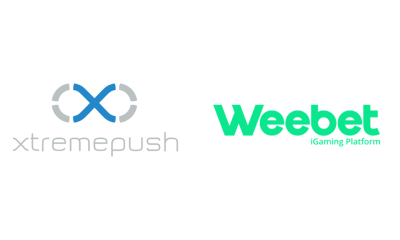
 Latest News6 days ago
Latest News6 days agoXtremepush boosts Brazilian presence with Weebet platform deal






